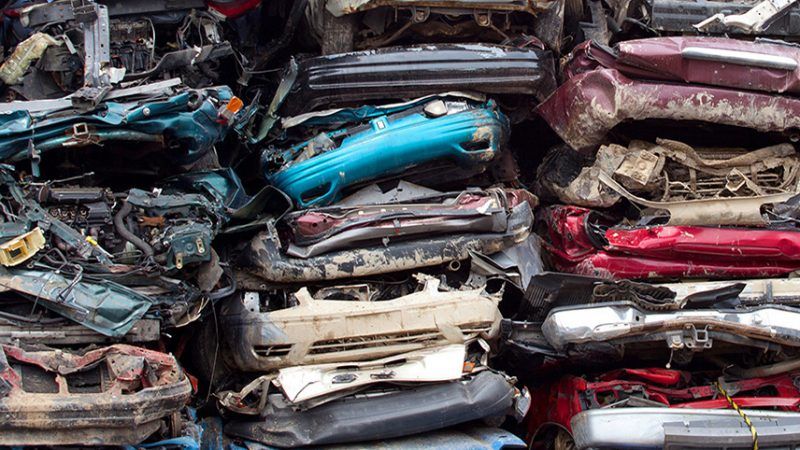Junkyard Blight No More

Like oil-slicked seagulls and smokestacks spewing black fumes, piles of rusting cars were standard symbols of environmental blight in the 1960s and early '70s. "Few of America's eyesores are so unsightly as its millions of junked automobiles," President Richard Nixon declared in a 1970 speech.
Although Americans had been dumping cars since the 1920s, replacing worn-out models with new wheels, the problem was a relatively late-breaking one. Up through the 1950s, junkyard workers would rip apart the cars and recycle their components. During World War II, U.S. Marshals even seized scrapped cars from a Maryland junkyard whose owner "had refused to sell the much-needed materials at established prices."
By the '60s, however, wages had risen, making it too expensive to pull old cars apart by hand, and steel mills were getting pickier about what they would accept. "The problem was copper: even a small amount—1 percent or so—when melted in a steel furnace will weaken the properties of steel," writes Adam Minter in Junkyard Planet: Travels in the Billion-Dollar Trash Trade (Bloomsbury). Once steel mills stopped buying the old scrap, junk cars started piling up. Making the problem worse were new bans on the incinerators that had previously burned away everything but a car's recyclable metal, producing choking black smoke in the process.
City, state, and federal officials all tinkered with regulations designed to hide or eliminate the blight of junked cars, without much success. "Abandoned cars are the biggest pollution problem this country has," a Pittsburgh official told The New York Times in 1972. By then, however, the solution was on its way.
It had started on an airplane in 1955, as businessman Sam Proler was throwing back screwdrivers and mulling a problem. Sam was one of four Houston brothers who owned Proler Steel Corp., a company that had found itself stuck with 40,000 tons of recycled-car bundles that steel mills would no longer accept. "They had too many contaminants, like copper and rubber," he told Recycling Today in 2007.
But Proler had an idea. What if instead of burning away the impurities and smashing cars into blocks, you could put a whole automobile into a hammermill like the industrial shredders used to break up rocks, chop animal feed, or chip wood? He asked the flight attendant for some paper and began sketching.
Turning the sketch into a working machine took several years—Proler received a patent in 1960—but the Prolerizer, as it came to be known, did the job. It reduced a car to what contemporary journalists described as "corn flakes" and used magnets to separate the iron and steel from other components. The machine was a monster: 1,000 feet long, with motors "taken from naval destroyer escort vessels," it "had 12-foot flywheels and 6,000 horsepower," brother Hymie Proler said in 2002.
Rumors of the new invention inspired another Texas innovator's more compact solution. Alton Newell owned a scrap yard in San Antonio, where he was already shredding car parts, if not full automobiles. "As soon as we saw that that could be done," his son Scott told Minter, Newell decided to build a shredder big enough to take a whole car. He also realized he could make it smaller and cheaper, with lower power requirements, than the Prolerizer.
The trick was to feed the car in little by little, rather than all at once. He dubbed his side-feed roller The Insight.
That move, concludes Minter, whose own family ran a scrap business, is what "made the shredder affordable to smaller scrapyards and cleaned up the mess of cars polluting the American countryside." It took decades to work through the built-up supply, but the two shredder models eventually solved the problem regulation couldn't, making piles of junked cars as obsolete as tail fins.
This article originally appeared in print under the headline "Junkyard Blight No More."


Show Comments (39)